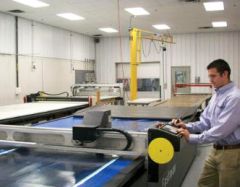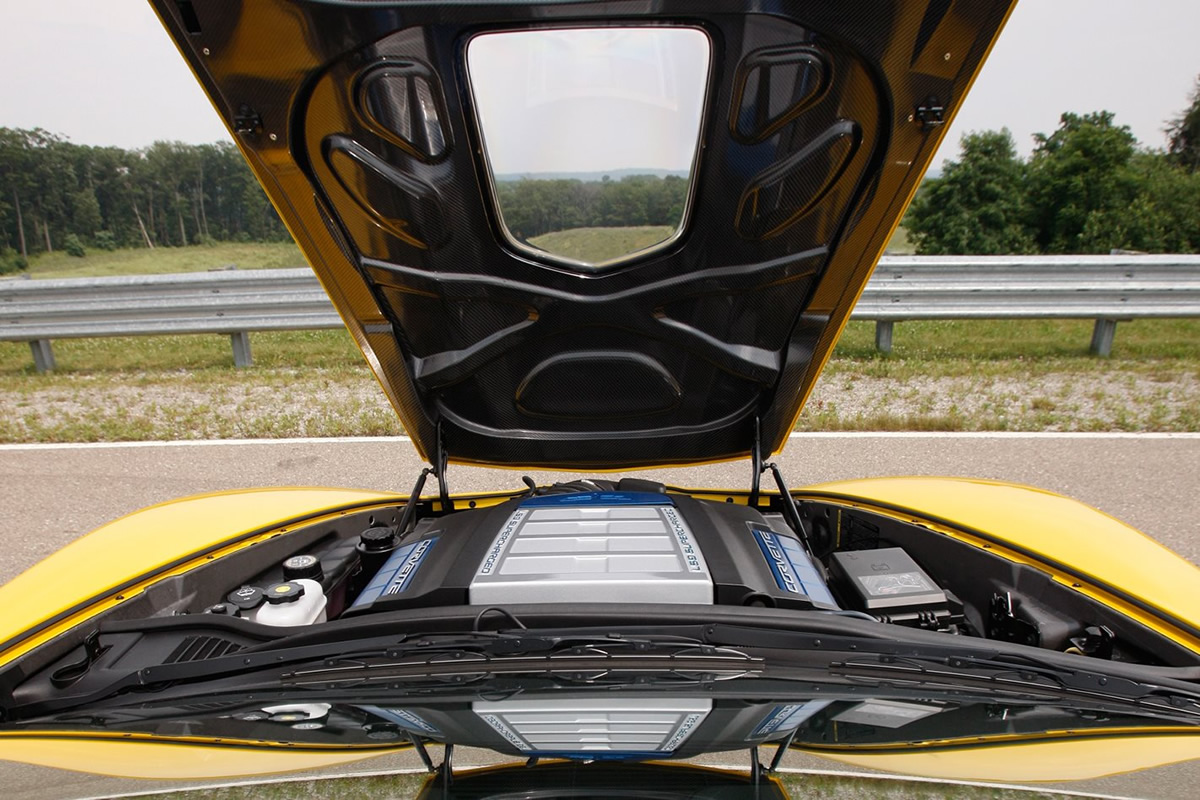Corvette to Mass-Produce CFRP Bonnets for 2009 Corvette ZR1
Corvette to Mass-Produce CFRP Bonnets
 According to Corvette, the ZR1 is set to be the first mass-produced car with an all-CFRP bonnet, with between 1,500 – 2,000 units sold annually.
According to Corvette, the ZR1 is set to be the first mass-produced car with an all-CFRP bonnet, with between 1,500 – 2,000 units sold annually.
This has meant that Corvette has had to refine their production process, ensuring that they can deliver one completed bonnet within a 60-minute production process.
During development, Plasan investigated a variety of different layup, kit and bagging methods to find a process combination that yielded the best appearance and performance within the shortest processing time.
Bonnet production begins with kit cutting. Rolls of carbon prepreg are loaded onto a cutting table supplied by Eastman Machine and cut into an individual kit of pieces needed to produce a complete hood (separate sets for outer and inner).
Because Plasan produces a number of CFRP parts for the ZR1, managing and organizing kits is a major aspect of production. Kit components are hand-layed into single-sided, female steel tools.
Layup technicians visually inspect prepregs and use special techniques to position plies precisely on the first try to minimize pulling or stretching of plies, which could distort the appearance, explains Lars Severance, Plasan's manufacturing engineer.
When layup is complete, the parts are vacuum bagged and moved to one of Plasan's four production-size autoclaves where, using ACG's fast-cure epoxy, they cure in about 10 minutes.
Because of their complex plan-view sweeps, demoulded parts are edge-machined on an automated, high-speed, 5-axis robotic router, which is capable of cutting very tight radii and negotiating complex slope changes at high spindle loads.
Next, the hood inner and outer panels are prepped for adhesive application and placed in a bonding cell. Here, they are robotically bonded around the perimeter edges using a two-part structural urethane specially formulated by Ashland Inc. to cure quickly, survive paint-bake oven temperatures and exhibit the high strength necessary to prevent debonding of inner and outer panels under the stresses of high-speed operating conditions.
Each hood is 100-percent hand finished. Technicians sand the outers and hand-polish the inners. Then, the inner panel is masked, the assembly is passed through Plasan's primer booth and, when cured, the primed hoods are shipped to Creative Liquid Coatings (Ft. Wayne, Ind.) to be painted.
Just before final quality-control inspection, the polycarbonate window is joined to the hood assembly. To accommodate the coefficient of thermal expansion (CTE) mismatch between the CFRP and the PC, technicians use a special compliant shear/ductile urethane adhesive, also provided by Ashland.
Completed units are shipped to GM's Bowling Green, Ky., assembly plant for installation on ZR1s.
Publication Date: 21/08/2009
Eastman Machine Corporation
